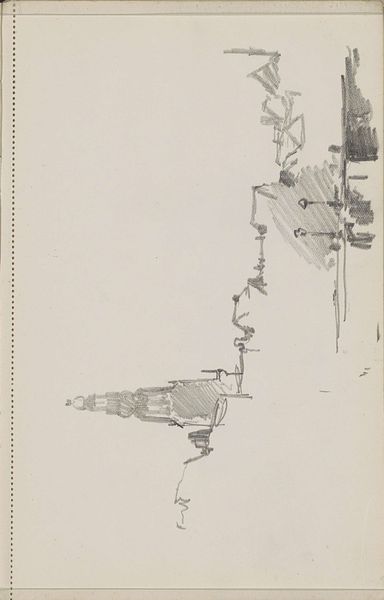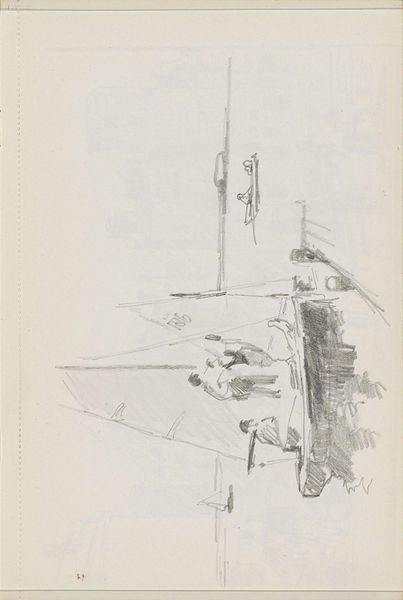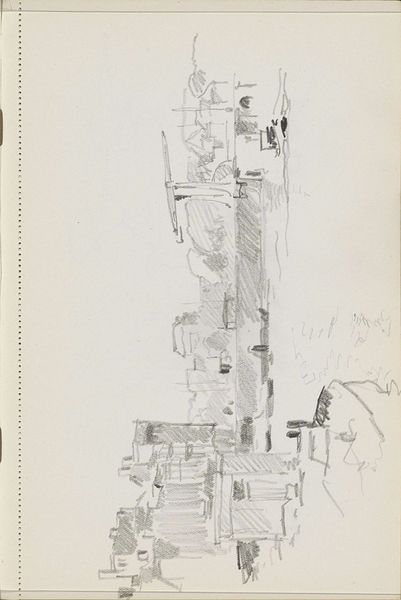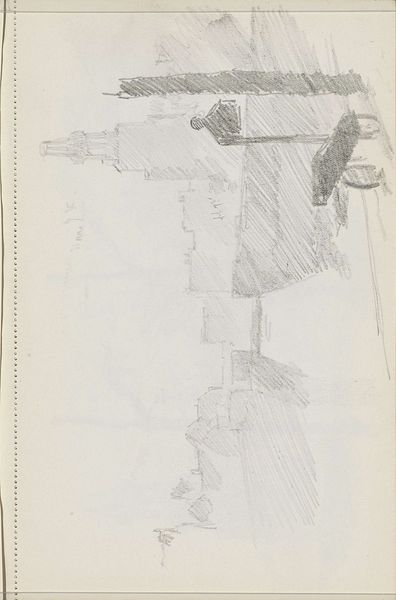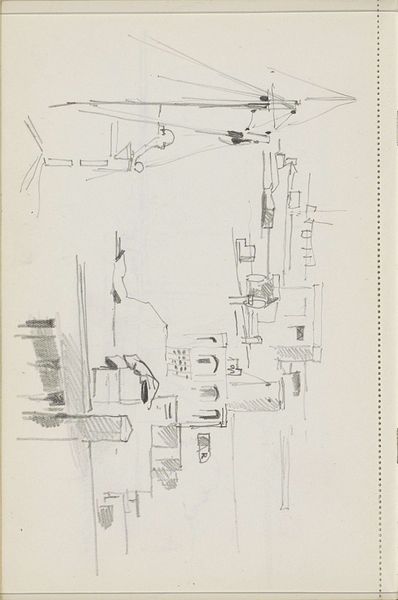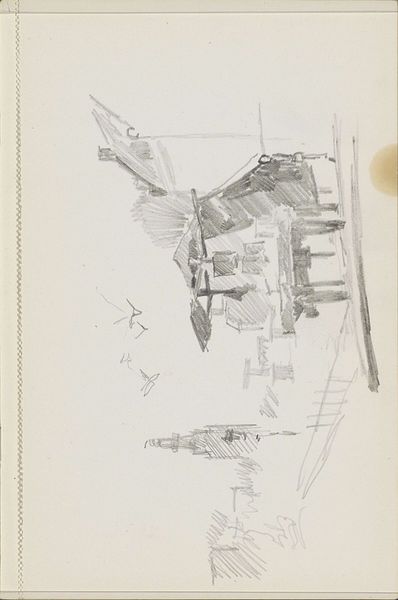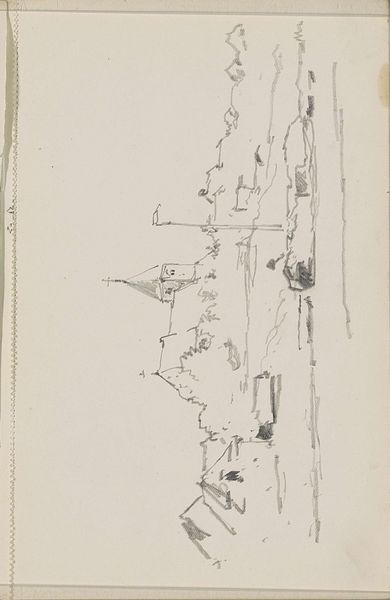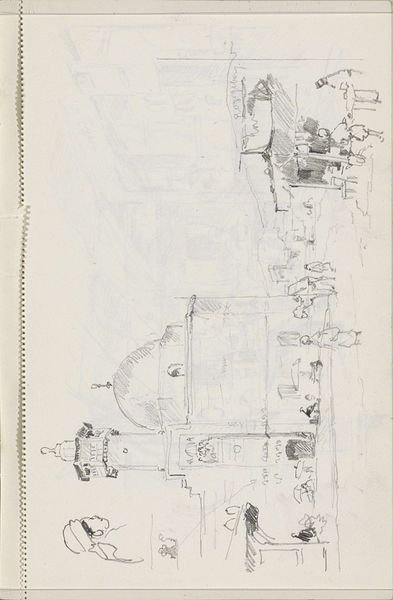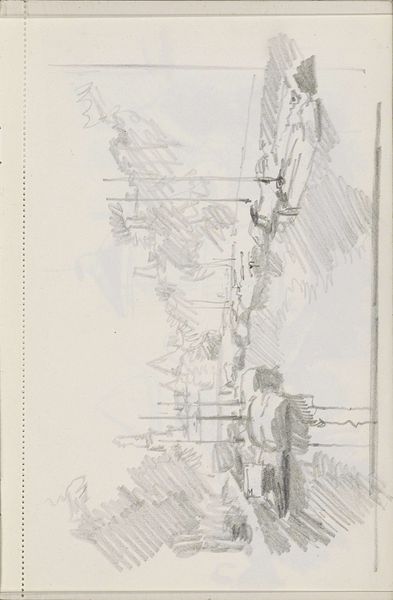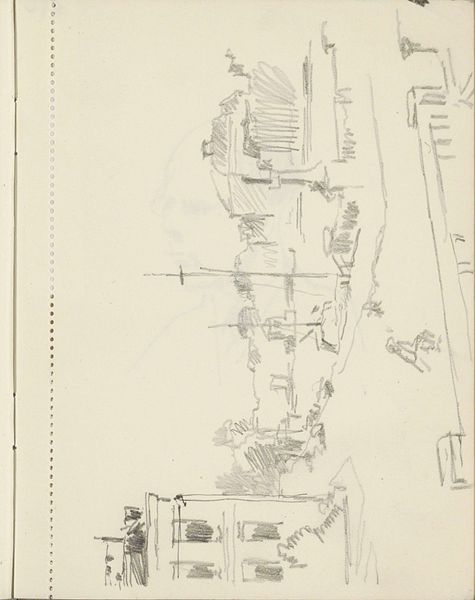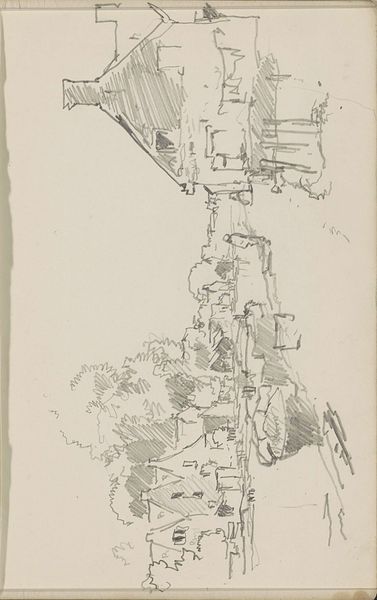
Huizen en een zeilboot aan de kade van een gracht c. 1935 - 1936
0:00
0:00
cornelisvreedenburgh
Rijksmuseum
drawing, pencil
#
drawing
#
quirky sketch
#
pen sketch
#
incomplete sketchy
#
personal sketchbook
#
idea generation sketch
#
sketchwork
#
ink drawing experimentation
#
pen-ink sketch
#
pencil
#
line
#
sketchbook drawing
#
cityscape
#
realism
#
initial sketch
Copyright: Rijks Museum: Open Domain
Curator: At first glance, this appears to be a rather informal sketch. What is your immediate impression of it? Editor: Disjointed. It's as though the artist was grasping for something, quickly jotting down fragmented images before they vanished. The lines are searching. Curator: That captures the feel rather well. What we are observing here is Cornelis Vreedenburgh's "Houses and a Sailing Boat on the Quay of a Canal," rendered circa 1935-1936. The piece, created with pencil and pen, provides an intriguing glimpse into the artist’s process. Editor: Intriguing is one word. My mind immediately looks for what stands as unusual or jarring, which feels immediately symbolic and maybe, revealing. Take, for example, the boat. Curator: You are drawn to the symbolism inherent in it. As am I. In canal-scapes across this period, one does not often find boats absent a sense of mooring or purpose; the boats, instead, appear to serve a secondary, even functional, purpose that suggests stability, rootedness. This boat looks as if it’s about to take flight, its lines disrupting what could otherwise be quite standard buildings and structural sketches. Editor: Precisely! And Vreedenburgh worked during a period of profound social change and precarity—it would have been near impossible for the artist not to observe shifting geopolitical landscapes. Might the lines of the boat function as both disruptive and prophetic? Or, might the quick sketch quality point to how some people become uprooted from traditional lands? Curator: It's important not to leap to such interpretations immediately, yet it is true the social context cannot be disregarded. Perhaps these fast lines reflect how swiftly society and individuals can also transform in real time. At its most practical level, such sketches acted to archive immediate experience in an ephemeral form, or stand in contrast to other completed landscape works during this time. Editor: I wonder whether Vreedenburgh intended to convey any distinct meaning with such renderings? It might just be that a lot is projected onto sketches from our historical position today. Curator: It might, yet this is precisely the tension which makes considering these visual remnants worthwhile. Thanks to these fragmented lines and evocative pen strokes, there's room for continuous dialogue, for ourselves, and within a broader audience of interpretation and historical meaning-making. Editor: I would agree with that. Perhaps such images can urge people today to value their surroundings or environment differently— or encourage appreciation for the artistic hand that helps society make better sense of itself.
Comments
No comments
Be the first to comment and join the conversation on the ultimate creative platform.
